Unsure about your French table manners? Click Here to download > > How to avoid these 10 food etiquette mistakes !
- Home ›
- Destinations ›
- Normandy ›
- D Day Beaches Guide
Visiting the D Day Beaches? This is the only guide you'll need
Published 19 May 2024 by Leyla Alyanak — Parisian by birth, Lyonnaise by adoption, historian by passion
Visiting the D Day beaches of Normandy can take a lot of planning. There are five main beaches, and each has plenty of things to see. I made two trips to the Normandy beaches recently and mapped out the details for you.
The 80th anniversary of D-Day on 6 June 2024 provided a golden opportunity to visit the Normandy beaches but this is an area of France that has always been high on people’s lists.
But the beaches are timeless and anytime is a good time to visit. That, however, can be a bit complicated, since there are several beaches, in different towns.
Because I experienced planning challenges when I visited (two weeks twice over two months), I decided to write this “uncomplicated” guide for first-time visitors who don't want to be overwhelmed with research.
The 5 main landing beaches on D-Day
- Utah Beach: American
- Omaha Beach: American
- Gold Beach: British
- Juno Beach: Canadian
- Sword Beach: British and French
Best times to visit D-Day beaches
Tips for visiting the D Day beaches
NOTE: Pages on this site may contain affiliate links, which support this site. See full Privacy Policy here.
As I watched families stroll along the beaches on a sunny afternoon, I couldn't begin to imagine that 80 years ago, tens of thousands of young men hit these same sands, armed and courageous.
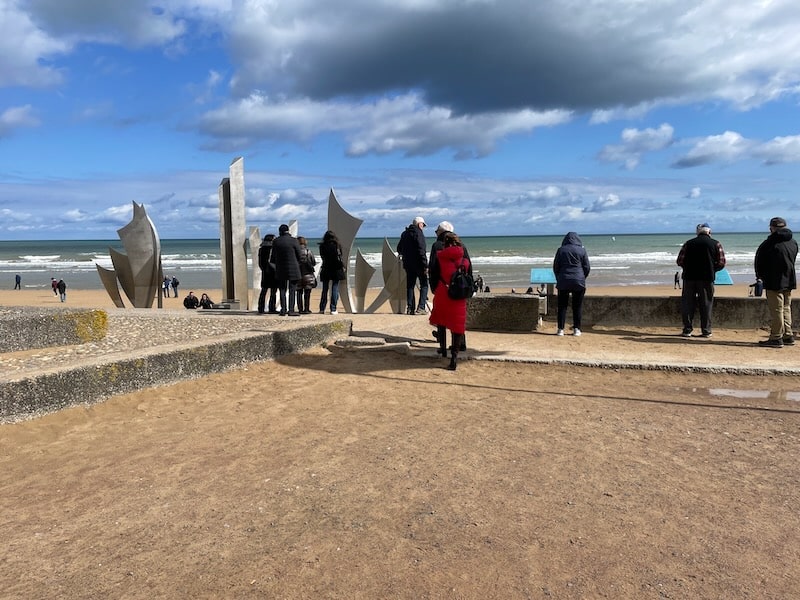 Tourists gather on a sunny winter day to admire the sculpture, The Braves, on Omaha Beach ©OffbeatFrance/Leyla Alyanak
Tourists gather on a sunny winter day to admire the sculpture, The Braves, on Omaha Beach ©OffbeatFrance/Leyla AlyanakBut disembark they did, many giving their lives in their march to rid Europe of Nazism.
What exactly was D-Day?
On 6 June 1944, more than 156,000 soldiers, sailors and paratroopers crossed the English Channel and stormed five Normandy beaches in a coordinated effort that would shift the course of World War II.
It was the largest military operation ever attempted on water and would break the Nazi’s stronghold on Western Europe. It was Operation Overlord.
The assault targeted five beaches: Utah, Omaha, Gold, Juno, and Sword, each heavily fortified by German forces. Allied troops – led by Great Britain, the US and the Soviet Union (but involving many other countries) – had prepared meticulously.
An elaborate deception plan, Operation Fortitude, convinced the Germans the invasion would be further north, at Pas de Calais, the narrowest point between Britain and France.
So when the actual attacks took place some 350km/217mi away, the German high command was slow to move.
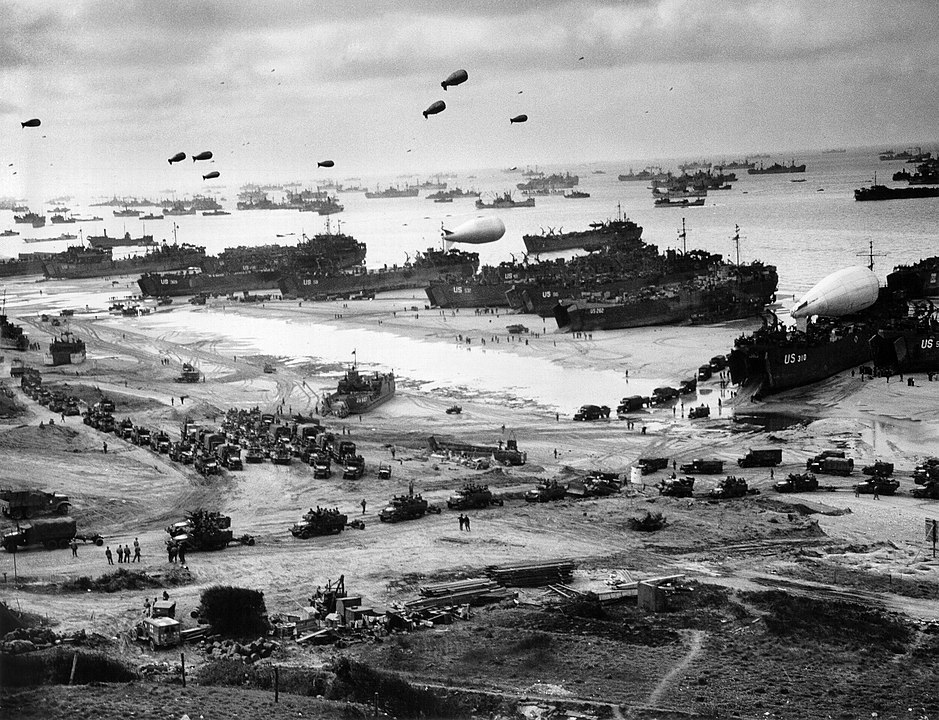 The landing at Omaha Beach on D-Day
The landing at Omaha Beach on D-DayThe success D-Day was not a foregone conclusion: Allied forces faced rough seas and high winds but were able to take advantage of a short break in the weather.
The success of the Allied landings led to the liberation of France from German occupation and opened a new Western front against Germany, in other words, it marked the beginning of the end.
Today, the Normandy beaches are dotted with memorials and museums that remind us of the cost of war and the price of freedom. The remaining bunkers and artillery and the pockmarked land begin to paint a picture of the daunting challenges the soldiers had to face.
The 5 main landing beaches on D-Day
Starting in the west, the landing zone encompasses five principal D-Day beaches: Utah, Omaha, Gold, Juno, and Sword. Each beach is different, with its own story, linking us to its past, whether we had a personal connection – through a grandparent or distant friend – or are simply curious about something that happened not that long ago.
Utah Beach: American
Utah Beach is the westernmost landing site and is located on the scenic Cotentin Peninsula, better known as a summer destination for Parisians in the know.
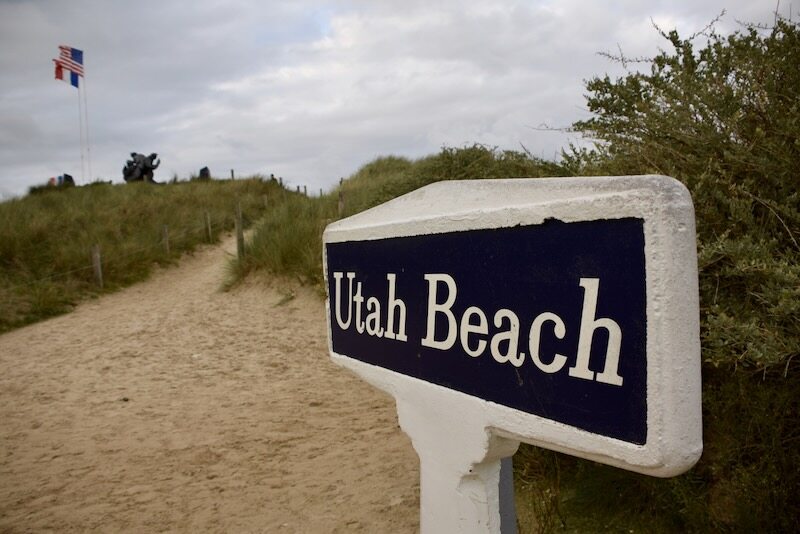
It was chosen as a landing site because of its proximity to the port city of Cherbourg, which the Allies believed they had to seize if they were to succeed.
The area was flatter than some of the other beaches, which made landings easier and fighting less intense, allowing American troops to secure the beach with fewer casualties than they would suffer elsewhere.
Must visit:
- Utah Beach Museum, which includes artefacts, personal narratives, and interactive displays.
- Sainte-Mère-Eglise Airborne Museum; this was the first village liberated by the Allies, and it has a memorial to the British paratrooper whose parachute was caught on the church steeple, leaving him hanging
Omaha Beach: American
Omaha Beach is probably the best known of the five beaches because of its intense battles and high casualties – some 2400 in a single day.
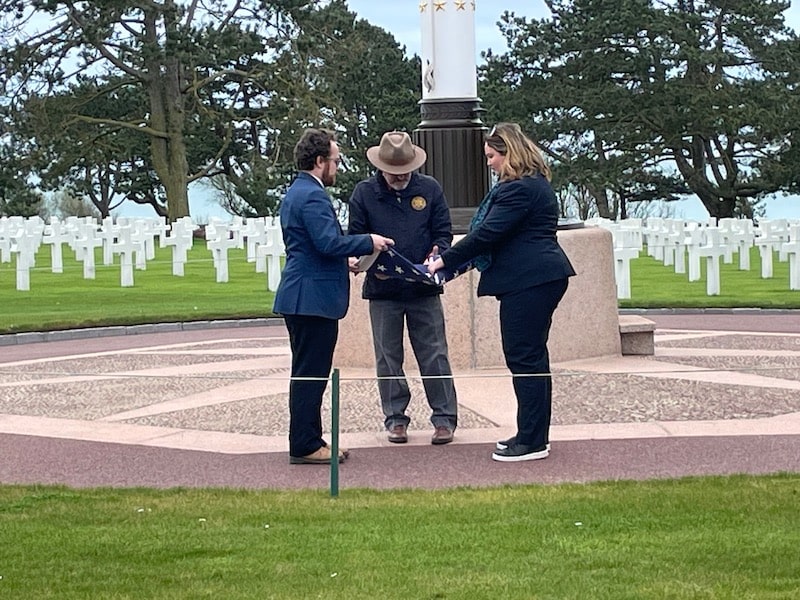
The terrain was tough. Once off the boats, those who actually made it to shore faced an uphill climb.
At Pointe du Hoc, a fortified German position, Rangers had to scale not a hill but a sheer cliff under direct fire from above. They were brave and persistent and eventually secured the beach, paving the way for further advances into France, but earning the beach its nickname of “Bloody Omaha” in the process.
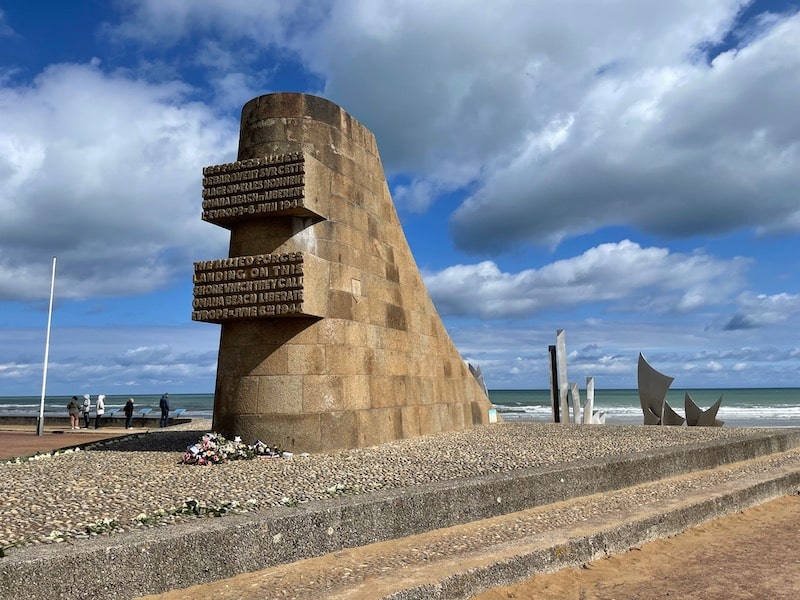
Looking along the calm stretches of sand, there’s little to remind us of the sheer terror those involved must have felt on this day.
Must visit:
- Normandy American Cemetery, the final resting place of nearly 10,000 American soldiers, and its Visitor Center
- Overlord Museum
- Pointe du Hoc clifftop battlefield, craters and German artillery remains
- Les Braves Memorial Monument
- Longues-sur-Mer battery between Omaha and Gold beaches, with German casemates and observation bunkers
- La Cambe German War Cemetery (more on this below)
Gold Beach: British
At Gold Beach, British troops would overcome German defenses and capture the nearby town of Arromanches, needed to set up Mulberry Harbor, an artificial port whose scattered remnants can still be seen, especially at low tide.
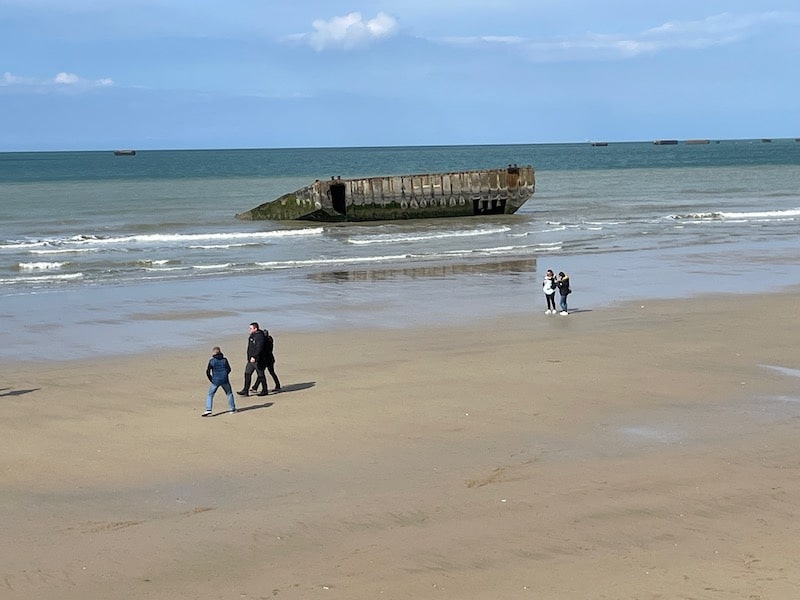
These harbors were of great importance, since they allowed for offloading of troops and essential goods, keeping supply lines open for the Allies.
Must visit:
- Remnants of the ingenious artificial Mulberry Harbor at Arromanches, including floating pontoons and concrete blocks
- D-Day Museum, Musée du Débarquement, right on the beach
- 360° circular cinema for an immersive experience of the battle
- British Normandy Memorial in Ver-sur-Mer, overlooking Gold Beach
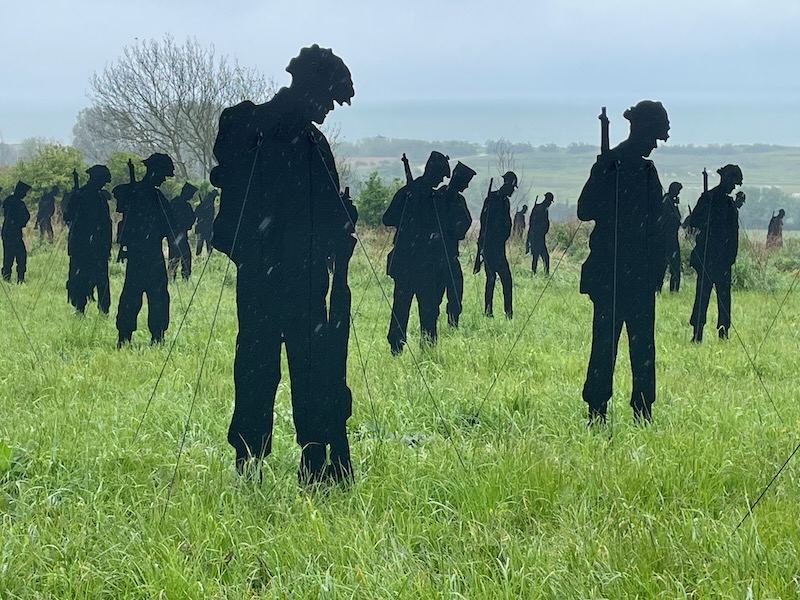 This amazing temporary installation at the British Normandy Memorial was designed by a British NGO, Walking with Giants, to commemorate the 1475 fallen British (and 177 French marines) on D-Day. Each figure represents one fallen soldier
This amazing temporary installation at the British Normandy Memorial was designed by a British NGO, Walking with Giants, to commemorate the 1475 fallen British (and 177 French marines) on D-Day. Each figure represents one fallen soldierJuno Beach: Canadian
Juno Beach is a landmark of immense significance to Canadian military history.
This is where Canadian forces faced tough opposition but succeeded in securing a vital victory, linking up with British forces from neighboring Gold Beach, essential for the subsequent push inland.
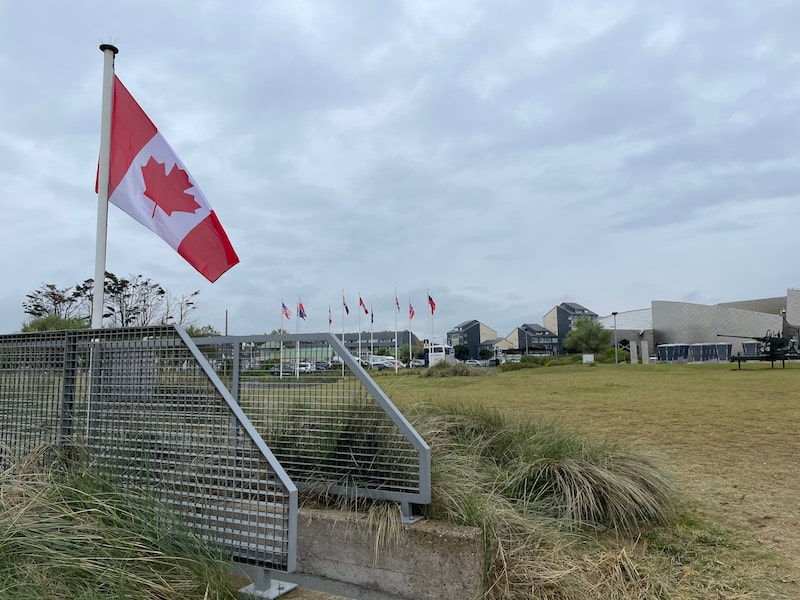
Today, the Juno Beach Centre at Courseulles-sur-Mer provides insights into Canada's role in World War II with detailed exhibits not only about the strategic nature of the advance but also about what was happening back home in Canada. You can also visit the remains of German bunkers and fortifications with a Canadian guide.
Must visit:
- Juno Beach Center and its memorial to Canadian troops
- Picturesque port of Courseulles-sur-Mer (within walking distance, a nice place for a lunch break)
Sword Beach: British and French
British soldiers and Free French Forces stormed this easternmost beach together, contributing in a major way to the overall Allied advance and showing their solidarity by joining forces.
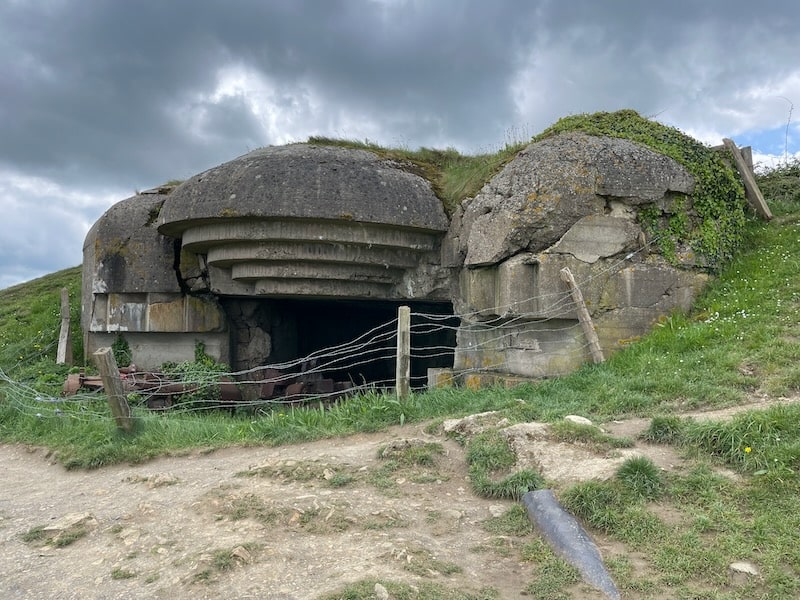 German battery at Longues-sur-Mer near Sword Beach
German battery at Longues-sur-Mer near Sword BeachFor those seeking a more serene experience, Sword Beach is usually less crowded, where remnants of coastal defenses can still be seen but in a more peaceful setting.
Must visit:
- Grand Bunker Museum for a look at German fortifications and living conditions
- Sword Beach Monument
- Pegasus Bridge (a replica), captured intact by British airborne troops, and Memorial Museum
German War Cemetery
Near La Cambe, inland between Utah and Omaha beaches, sits the German War Cemetery, Normandy’s largest, the resting place of 21,000 German soldiers.
It is a somber site, even on a sunny day, with impeccable rows of black granite crosses and a central mound which pays tribute to the unknown soldier on both sides of the conflict.
I was as moved by this cemetery as I was by the other memorials, all helping deepen my understanding of the universal losses of war and its shared human cost, which knows no national boundaries. A visit here is a strong reminder of the reconciliation and peace achieved since then.
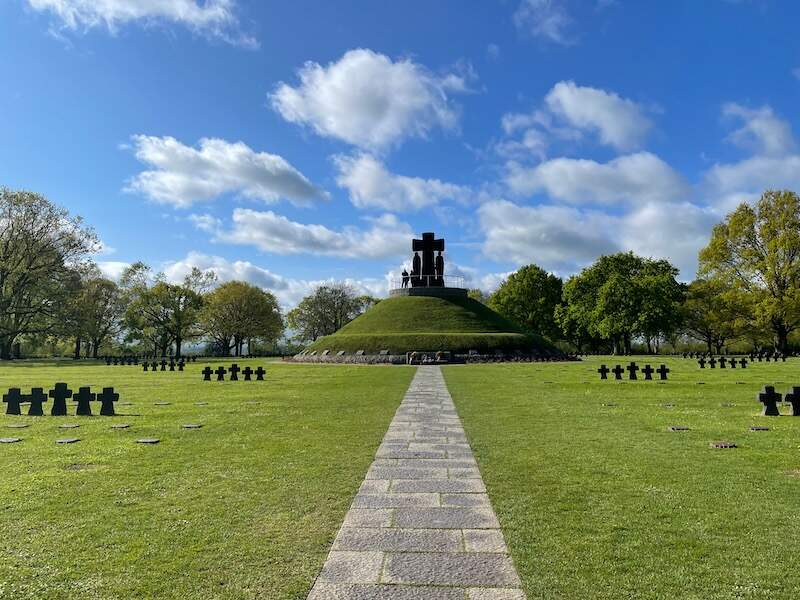
Best times to visit D-Day beaches
May to early June is an ideal time to visit, but there are other excellent seasons.
In late spring, weather is less rainy than earlier in the year (it rains often in Normandy), and temperatures can be mild. I visited in March (cold, blustery, but uncrowded) and in May (sunny, filled with blossoms – but more visitors).
While there were definitely plenty of people in May, it’s nothing compared to the crowds of peak summer months. But parking lots are huge and these sites are spread out, with plenty of open spaces, so while you might feel the crowds on the roads or where there are entrances, you’ll have plenty of opportunities to get away from people everywhere else.
Early fall, in September and October, is a bit like late spring, with nice weather and fewer crowds.
Tips for visiting the D Day beaches
- To avoid the worst crowds and enjoy a more personal experience, arrive early in the day if you can, especially to the more popular sites.
- Be prepared for changes in weather, which often take place every few minutes in Normandy. Make sure you have an umbrella or raincoat or poncho for the rain, and an extra layer in case the weather cools.
- Please be respectful, especially if you’re visiting with children. Graves are not playgrounds, and although most people behave, you may be shocked to see people taking laughing selfies among the rows of the fallen.
- Consider how much time you’ll have for what you want to see. Ideally, two full days if you have your own transportation will get you to the main sights, while three would be even better. Distances are short, but there is so much to see.
The best way to visit the D-Day beaches
This will depend on how much time you have.
Driving to the D-Day beaches
If you have several days at your disposal, driving is the best way to visit the D-Day beaches.
Independent transportation will allow you to reach far more sites than you would any other way, especially some of the more out-of-the way ones.
If you don’t have your own car, you can easily rent one here (or use the site to compare prices to get an idea), and if you’re a bit antsy about renting, here’s everything you need to know.
To give you an idea of distances, here are some examples for Omaha Beach:
- From Bayeux: 25km/15mi, or about 23 minutes
- From Caen: 52km/32mi, or about 40 minutes
- From Paris (Charles de Gaulle airport): 307km/190mi, or just under 4 hours
Parking is not a problem at any of the sites, the largest of which have huge parking lots. Many are free, but a few, such as the British Normandy Memorial, charge a fee that is then used for the memorial’s upkeep.
If you're a bit unsure of French driving rules (and some of them make no sense at all), this quick online course is excellent and will bring you up to speed.
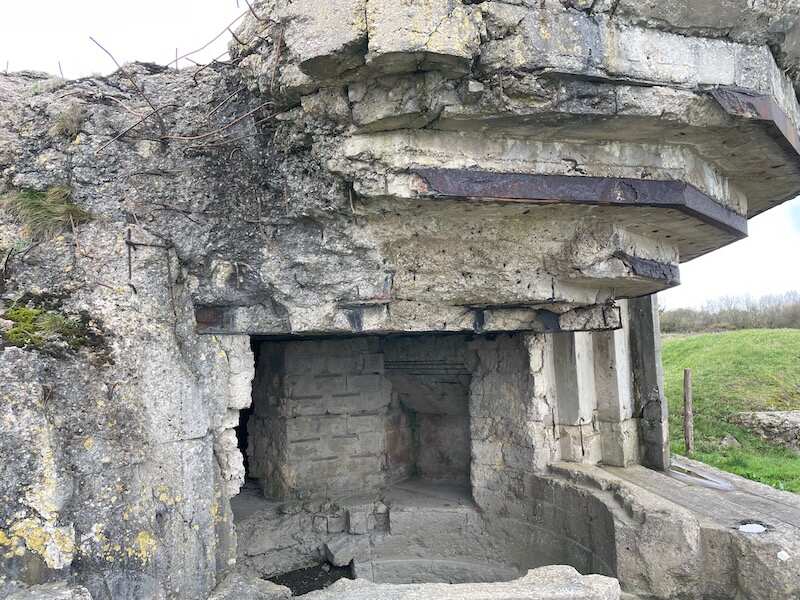
Taking public transport to the Normandy beaches
This is quite complicated and requires planning – and time. Trains to the region usually leave from the Gare Saint-Lazare in Paris to either Caen or Bayeux. You’ll find schedules and prices here.
From either city, you can catch a local bus to some of the sights.
From Bayeux or Caen, check the timetables for Nomad, the local bus company:
- Bus 101 goes from Caen to Courseulles-sur-Mer
- Bus 120 goes from Bayeux to Colleville-sur-Mer
- Bus 121 goes from Bayeux to Arromanches
There are probably others, and you should contact the tourist office (once you click through, scroll down to the bottom of the page for all the tourist office contacts) of the destination you want to visit for more detailed information. Every one I’ve called so far speaks English.
Just a word of warning: check train and bus schedules carefully because they can change drastically depending on the season or whether there are school holidays.
Using public transport takes planning and is not the simplest way of visiting the D-Day sites, since some bus stops are a significant distance from the sites. If you don’t want to be bothered with all this, take a guided tour to the beaches. I explain this in greater detail below.
I’ve tried all three methods. Driving was my first choice, followed by booking a guided tour. Out of season, public transportation should only be attempted if you have plenty of time because transportation can be quite infrequent and erratic.
I’ve taken several of the guided tours below and they’ve all been hassle-free. I’ve listed some of the better ones in case you choose this option.
Taking a guided tour to the Normandy landing beaches
Having a tour guide can be a great help in explaining the battle of Normandy and the events of D-Day.
The beaches are best reached from Bayeux (only a short drive from the coast) or Caen (not much further), and you'll find plenty of tours from either. However, if you’re in Paris and you only have a day, you can still take a day trip to the Normandy coast but it will be a very long day.
Here are various tours I can either recommend personally or that have excellent reviews from others who experienced them recently. Just one thing – itineraries change so use what's below as guidance but please check first before reserving.
Best guided tours from Bayeux
- Half-day tour to American D-Day sites - hits the main sights of Omaha Beach, Pointe du Hoc and the American Cemetery
- Similar to the above tour, this one also covers the main three sites of the US landing
- Full-day guided tour - includes the above stops but adds in the more distant Utah Beach and Sainte-Mère-L’Eglise
- Private full-day tour - this includes both Omaha and Utah beach sites, as well as a rarer visit to a major paratrooper drop zone
Best guided tours from Caen
- D-Day sites + Caen Memorial (including lunch) - this tour falls somewhere between the half and the full day, as it also involves lunch and a visit to the Caen Memorial
- Small group tour to Omaha sites - this tour provides a driver rather than a guide, but does include entrance to the Overlord Museum in addition to the three Omaha sites
- Private tour to Canadian sites - for up to 7 people, focused on Canada’s involvement in D-Day
Best guided tours from Paris
Remember that it’s a long drive from Paris and back, but if you cannot spend more than a day visiting the D-Day beaches, then here are some of the best tours for a rewarding visit from Paris. Note that only a few include lunch.
- Full-day tour with lunch - this tour includes both Utah and Omaha beach and lunch and is by coach, hence its more affordable price
- Small group all-day tour - includes several stops, including (in addition to the Omaha sites) the German battery at Longues-sur-Mer and the Overlord Museum
- Small group to Juno Beach - full-day trip to Canadian sites
- VIP Services private day trip - to avoid the crowds and travel in comfort, this private trip has hotel pickup (especially important given 7am departures) and takes you to the three Omaha sites plus Arromanches on Gold Beach
Other ways of visiting the D-Day beaches
While I’ve named the most common ways of visiting the beaches, you could also cycle along the coast. Normandy is well-equipped with bike paths and you can try either of these tour agencies: Petite Reine (for electrically assisted bikes) or Bike Tours (for standard bikes, although they also have some electric ones).
D-Day books to prepare your trip
Visiting the Normandy beaches is a historical journey in many ways, so if you’re not familiar with what happened on D-Day or if you want to brush up on your history, try these books for some excellent background:
- The Bedford Boys by Alex Kershaw: about a group of young men from Bedford, Virginia, who were part of the first wave of troops to land on Omaha Beach on D-Day
- The Longest Day by Cornelius Ryan: a comprehensive account of the events leading up to and during the D-Day invasion
- Band of Brothers by Stephen E. Ambrose: about the ordinary men who became the World War II’s most extraordinary soldiers at the frontlines of the war's most critical moments
- Overlord – D-Day and the Battle for Normandy by Max Hastings: a journalist’s account of the D-Day landings
- D-Day – Juno Beach, Canada's 24 Hours of Destiny by Lance Goddard: hour-per-hour chronicling of one of Canada’s greatest military achievements
Before you go…
The D-Day beaches are an experience you’ll never forget, whether you have close personal links to them or not. This is a region incredibly rich in many kinds of history so while you’re here, if you have the time, you could go further afield to Caen or Bayeux.
Bayeux was spared fighting during the war and has remained intact for centuries, home of a magnificent cathedral, an excellent museum on the Battle of Normandy, and the world-famous Bayeux tapestry, which tells the story of the Battle of Hastings in 1066.
Caen is the site of the excellent Caen Memorial Museum, the largest in France dealing with World War II, but has plenty more to offer, including a lovely old town and Caen Castle.

